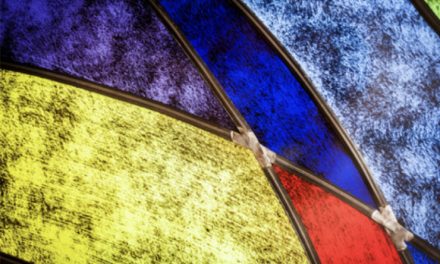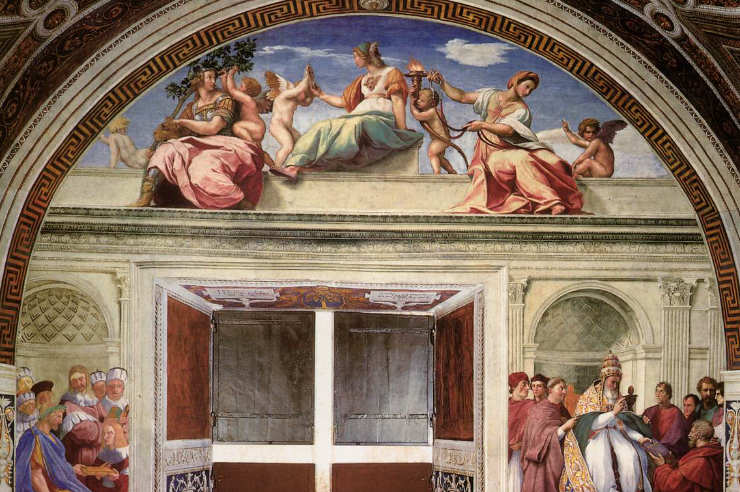 I live in Canada and am currently teaching a course in Logic. My usual preoccupation with conversion, therefore, is a rather dull affair. When I convert US dollars to those of the Great White North, I receive the monetary equivalent in Canadian currency. When I instruct my logic students on how to convert propositions, I explain that a universal negative proposition converts into an equivalent partner. Thus, “No frogs are ballerinas” is logically equivalent to “No ballerinas are frogs”. In both instances conversion adds nothing while maintaining an unexciting and unadventurous status quo.
I live in Canada and am currently teaching a course in Logic. My usual preoccupation with conversion, therefore, is a rather dull affair. When I convert US dollars to those of the Great White North, I receive the monetary equivalent in Canadian currency. When I instruct my logic students on how to convert propositions, I explain that a universal negative proposition converts into an equivalent partner. Thus, “No frogs are ballerinas” is logically equivalent to “No ballerinas are frogs”. In both instances conversion adds nothing while maintaining an unexciting and unadventurous status quo.
Religious conversion, however, is quite a different matter. Msgr. Robert Hughes Benson, author of fifteen highly successful novels, had this to say about his conversion to the Church of Rome: “There is no happiness in the world comparable to that of the experience known as conversion.” Now that is a conversion with a difference.
C. S. Lewis, who knew something about religious conversion, likened the spiritually re-vitalized convert to someone who has gone through “as big a change as a statue which changed from being a carved stone to being a real man.” And this is what Christianity is all about he added: “This world is a great sculptor’s shop. We are the statues and there is a rumor going round the shop that some of us are some day going to come to life.” Conversion is a personal metamorphosis, an extraordinary quantum leap of spiritual and personal development.
It is no doubt true, as Chesterton has remarked, that the Catholic Church is a house with many gates through which no two people enter “at exactly the same angle”. Nonetheless, the dramatic change associated with religious conversion is often accompanied by a sense of entering a larger reality. For Chesterton, “Conversion calls a man to stretch his mind, as a man awakening from sleep may stretch his arms and legs.”
The following offers a few examples of converts attempting to express, in a poetic manner, their joyful sense of entering into a larger and more satisfactory reality.
Evelyn Waugh, who entered the Catholic Church in 1930 at the age of 26, said that “Conversion is like stepping across the chimney piece out of a Looking-Glass world, where everything is an absurd caricature, into the real world God made; and then begins the delicious process of exploring it limitlessly.”
Maurice Baring, a close friend of both Chesterton and Belloc, was received into the Church on February 1, 1909. In a sonnet reflecting his experience of conversion, we find a nod to G. K.’s reference of entering through a gate:
One day I heard a whisper: ‘Wherefore wait?
Why linger in a separate porch?
Why nurse the flicker of a severed torch?
The fire is there, ablaze beyond the gate.
Why tremble, foolish soul? Why hesitate?
However faint the knock, it will be heard.’
I knocked, and swiftly came the answering word,
Which bade me enter to my own estate.
These stanzas echo the plight of Plato’s cave dwellers who, unfortunately, sense the “flicker” but are oblivious to the “fire”. It also brings to mind what John Henry Cardinal Newman said about another form of conversion, namely, from mortal to eternal life: “Ex umbris et imaginibus in veritatem” (out from shadows and imaginings to truth). Siegfried Sassoon, Catholic convert, poet, and decorated war veteran, also wrote about this ultimate conversion:
I ask one world of everlasting loss
In all I am, that other world to win,
My nothingness must kneel below the Cross,
There let new life begin.
When Chesterton’s wife, Frances, entered the Church, her husband wrote a poem of five stanzas in her honor. The first alludes to that joyful sense of entering a broader and more luxurious world, akin to the transition Baring describes from “porch” to “estate”:
But not as distance, not as danger,
Not chance, and hardly even change,
You found, not wholly as a stranger,
The place too wondrous to be strange.
Concerning his own conversion, similar to C. S. Lewis, he emphasized a kind of resurrection from lethargy to life:
The sages have a hundred maps to give
That trace their crawling cosmos like a tree,
The rattle reason out through many a sieve
That stores the sand and lets the gold go free:
And all these things are less than dust to me
Because my name is Lazarus and I live.
Vivien Dayrell-Browning, perhaps best known as the wife of Graham Greene, produced, in her youth, a volume of poetry and essays for which Chesterton saw fit to pen the Introduction. Reflecting on her own conversion, she stated the following in a poem entitled, Lux Mundi:
Like acolytes the candles stood
Ranged with their flames of restless gold,
Above them hung the glimmering Rood,
Below, the Body and the Blood,
O Mystery no words have told!
Nor have men’s hearts yet understood –
(O strange and still Beatitude!)
The Holy Thing their hearts may hold.
Poetry is the attempt to express the inexpressible. Its metaphors soar beyond the prosaic and intimate a better world that is both more bountiful and more real. Such metaphors are like reversed parachutes, carrying us upwards on currents of grace, against the downward force of gravity.
Yet, the effort that the poet makes in attempting to convey the inexpressible is not without reward. Percy Bysshe Shelley referred to poetry as arresting the “vanishing apparitions which haunt the interlunations of life”. For kindred spirits who have shared the same experience, the language of poetry communicates a common truth.
The Catholic world, especially as it is experienced by the convert, is both too large to comprehend and too fleeting to capture. Yet, the convert’s attempt to express poetically the joy he experiences in his new found state is testimony to the energy it elicits and the charity it inspires. Furthermore, good poetry validates its object by both its beauty and its credibility. The heart confirms what the mind can only suspect.












